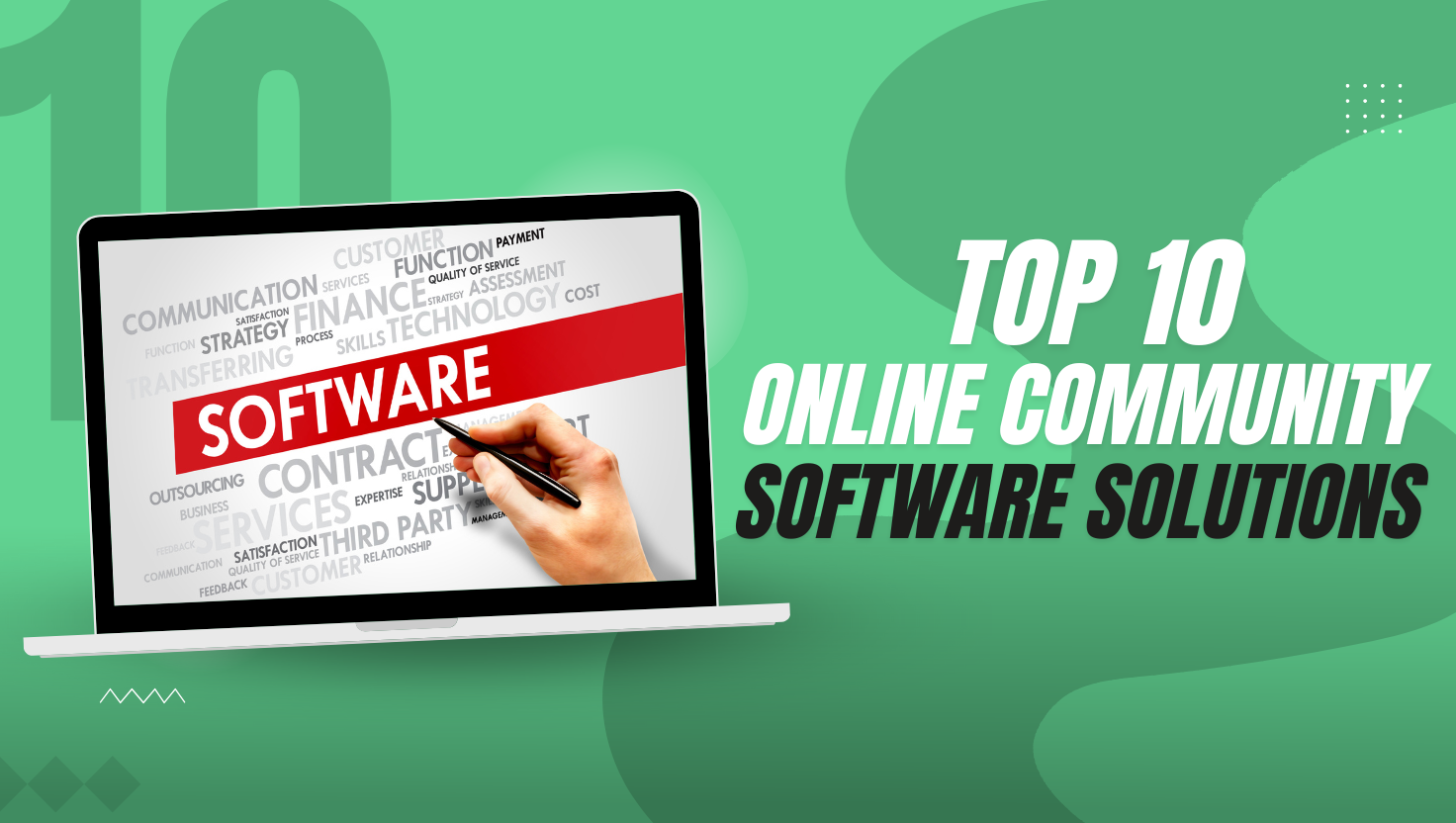
For membership communities, the backbone of your operations has always been your member data. For years, that meant relying on traditional Member Databases (or Membership Management Systems). These are robust platforms designed to manage the administrative side of your association – membership records, dues, event registrations, communications lists, and more. They are, without a doubt, essential for the smooth functioning of any association or membership organization.
But the landscape has shifted dramatically. Today, Community Management Software offers a far more dynamic and integrated approach, specifically designed to go beyond managing information about members, to fostering interaction among members. So, how do you decide what's best for your association's future, considering both provide a "database" of sorts?
Let's dive into the differences and help you figure out the right path.
The Foundation: Traditional Member Databases (MMS)
When we talk about traditional member databases or Membership Management Systems (MMS), we're discussing sophisticated platforms that serve as the administrative brain of your association. These systems are designed to manage the entire membership lifecycle from an organizational perspective.
Key Strengths of a Traditional MMS:
- Centralized Administrative Data: This is their core strength. An MMS excels at storing and managing detailed member profiles, contact information, membership tiers, renewal dates, payment history, and communication preferences.
- Automated Membership Management: They automate critical tasks like dues collection, renewal reminders, new member onboarding sequences, and membership status updates.
- Event Management & Registration: Most MMS platforms include robust tools for creating event pages, managing registrations, tracking attendees, and processing payments.
- Communication & Marketing Tools: They often have integrated email marketing capabilities, allowing you to segment your member list and send targeted communications like newsletters, announcements, and event invitations.
- Reporting & Analytics: They provide valuable administrative reports on membership numbers, retention rates, financial performance, and event attendance.
- Compliance & Security: Designed with data security and privacy in mind, they help associations comply with regulations regarding member data.
- Limited Member-to-Member Interaction: While they help you communicate with members, they typically do not provide a platform for members to engage directly with each other. There's no built-in forum, or discussion board, let alone a thriving, modern, social hub.
- Passive Member Experience: Members can usually access their profiles, update information, and register for events, but the experience is largely transactional. It doesn't encourage peer-to-peer connection or collaboration.
- Absence of "Community" Features: The focus is on managing the membership, not cultivating a vibrant, interactive community space. There are no dedicated areas for discussions, content sharing among members, or creation of special interest groups by members.
- Difficulty in Measuring Engagement Depth: While you can track event attendance or email opens, it's challenging to gauge the true level of member engagement, satisfaction, or connections formed within the community itself.
- Siloed Member Journeys: Information about a member's administrative status is there, but their qualitative interactions (who they're talking to, what content they're creating or discussing) are often missing from this system.
The Evolution: Community Management Software
Now, imagine taking all the administrative prowess of an MMS and layering on a dynamic, interactive space where members don't just exist but thrive together. That's what Community Management Software (CMS) brings to the table. These platforms are explicitly designed to foster peer-to-peer engagement, collaboration, and a sense of belonging.
The Added Power of Community Management Software:
- Dedicated Engagement Hub: This is the core differentiator. A CMS provides a dedicated online space (a member portal, forum, social network, or combination) where members can interact, share knowledge, ask questions, and build relationships directly with one another.
- Interactive Features: Think discussion forums, user-generated content capabilities (blogs, articles), private and public groups, direct messaging, member directories with robust search filters, and live chat features.
- Enhanced Member Experience & Self-Service (for Engagement): Members are empowered not just to manage their profile but to actively participate. They can start discussions, join groups, create content, respond to others, and find peers based on shared interests.
- Rich Engagement Analytics: Go beyond basic attendance. A CMS helps you track forum participation, popular topics, influential members, content contributions, and the overall health of your community. This data is crucial for understanding member value and identifying at-risk members.
- Content Curation & Knowledge Sharing: Members can contribute and access a rich library of user-generated content, creating a valuable knowledge base that grows organically.
- Streamlined Communications (Engagement-Focused): While an MMS handles broadcast emails, a CMS facilitates targeted group communications, automated nudges based on activity, and real-time alerts about discussions.
- Monetization & Value-Add Opportunities: Beyond standard dues, a vibrant community can open doors for premium content, sponsored groups, or even micro-communities that drive additional revenue. Studies show engaged members are more likely to renew. For example, a 2023 report by Community Brands found that associations leveraging engagement tools saw higher member retention rates compared to those relying solely on basic administrative systems.
So, What's Right for Your Association? The Convergence.
Here's the critical insight: for most forward-thinking membership communities today, it's rarely an "either/or" choice between a robust MMS and a CMS. It's increasingly about finding a solution that offers both integrated administrative capabilities AND powerful community engagement features, or finding two systems that integrate seamlessly.
Consider a Dedicated Community Management Platform (or an Integrated Solution) if you:
- Prioritize fostering genuine connections and peer-to-peer learning among your members. This is the biggest differentiator.
- Want to increase member engagement, participation, and ultimately, retention by providing a space for continuous interaction beyond events and newsletters.
- Need to understand how your members are interacting and what truly resonates with them, not just who they are.
- Aim to empower members to be active contributors to your community's value, not just passive recipients of information.
- Are looking for a more dynamic, modern, and sticky experience that differentiates you from other associations.
- Believe that a strong sense of community is key to your association's long-term growth and relevance. Research from Gartner (2022) indicates that organizations that successfully build online communities experience a 20-30% higher customer retention rate.
You might be able to start with a strong Traditional Member Database (MMS) if:
- Your association's primary focus is purely administrative management of members, dues, and basic communications, with very little emphasis on member-to-member interaction.
- Your budget is extremely constrained, and you need to prioritize core administrative functions above all else.
- Your community is currently very small and geographically dispersed, making in-person engagement difficult, but online peer interaction isn't yet a strategic priority. (Even here, a basic CMS feature set could be beneficial.)
The Modern Reality: Integration is Key.
Many leading Membership Management Systems now recognize the importance of community and have either built-in basic community features or, more commonly, offer robust integrations with dedicated Community Management Software. This allows you to leverage the administrative power of your MMS while providing a rich, interactive experience through a CMS.
The future of membership communities isn't just about managing lists; it's about building vibrant, interconnected ecosystems where members feel valued, heard, and connected to one another. Choosing the right software isn't just a tech decision; it's a strategic investment in the heart of your association: your community.





.png)
